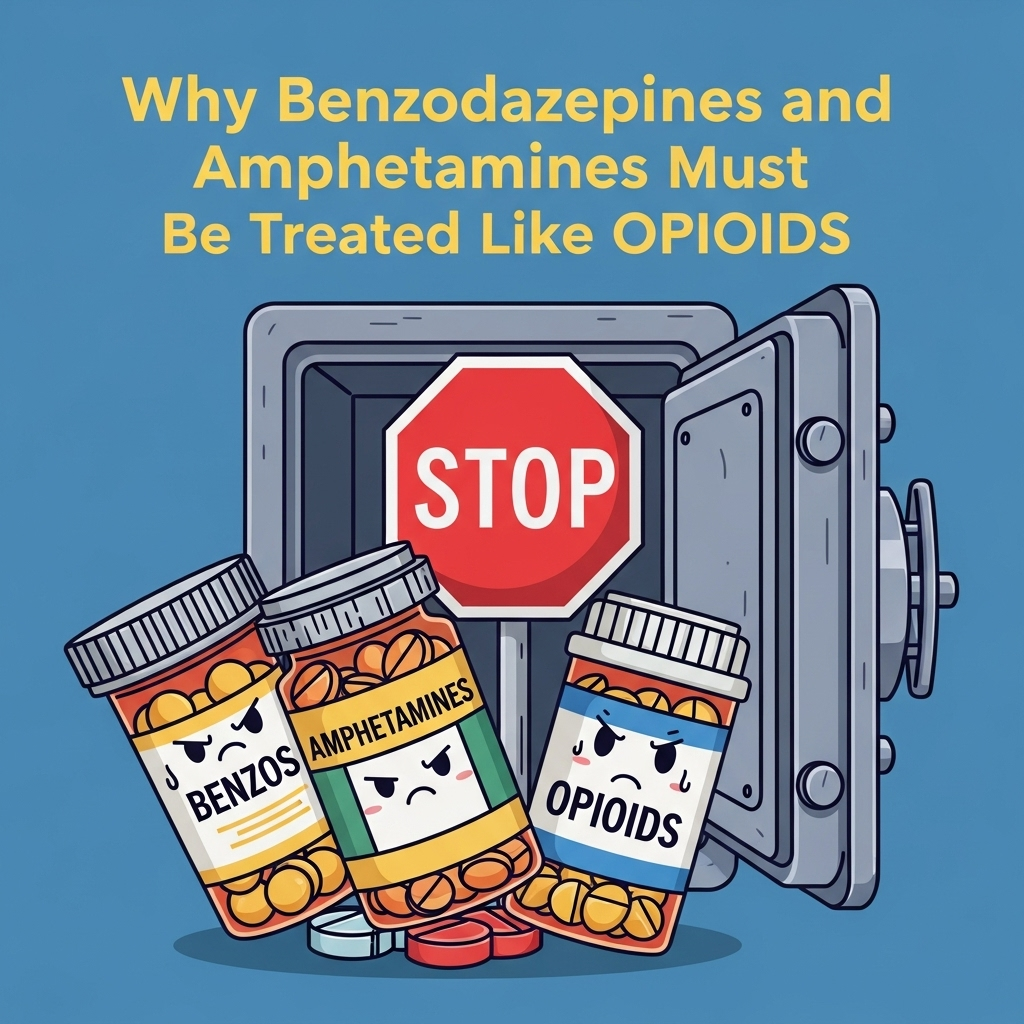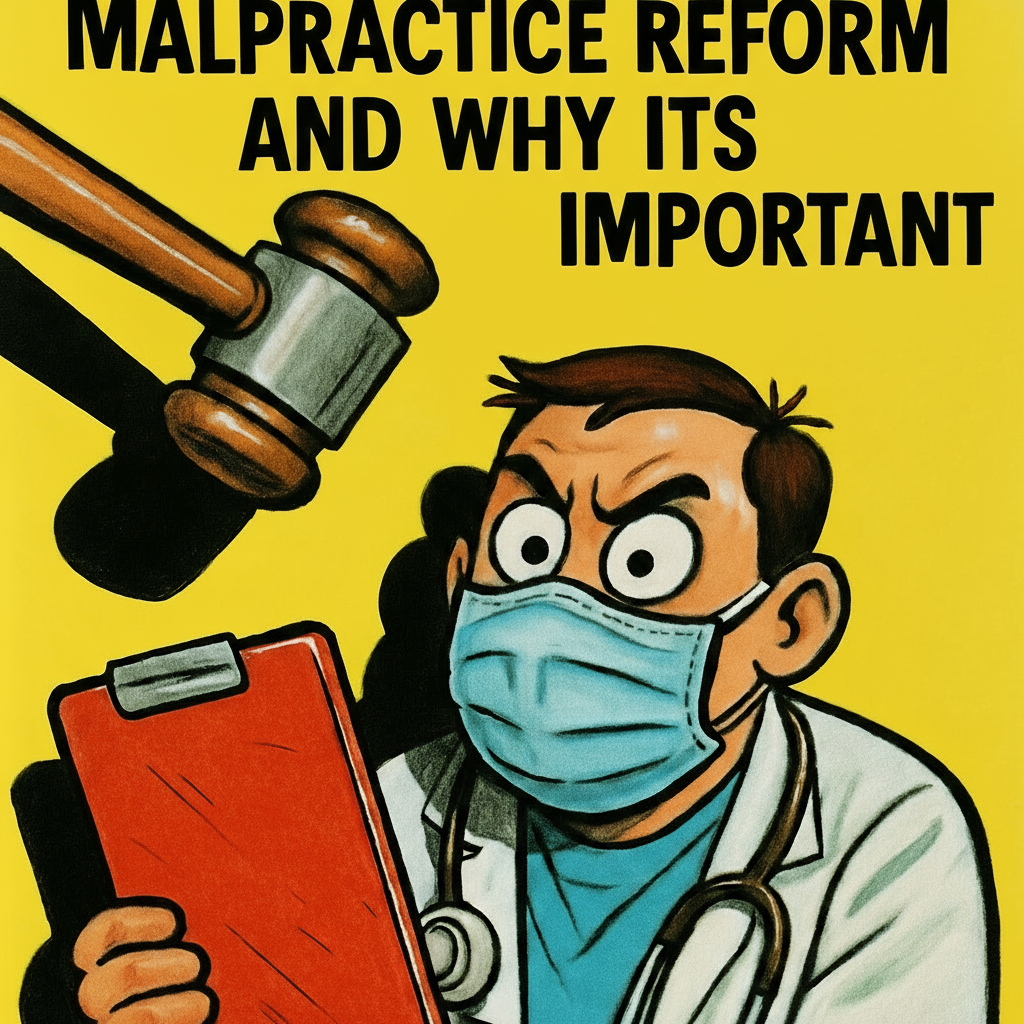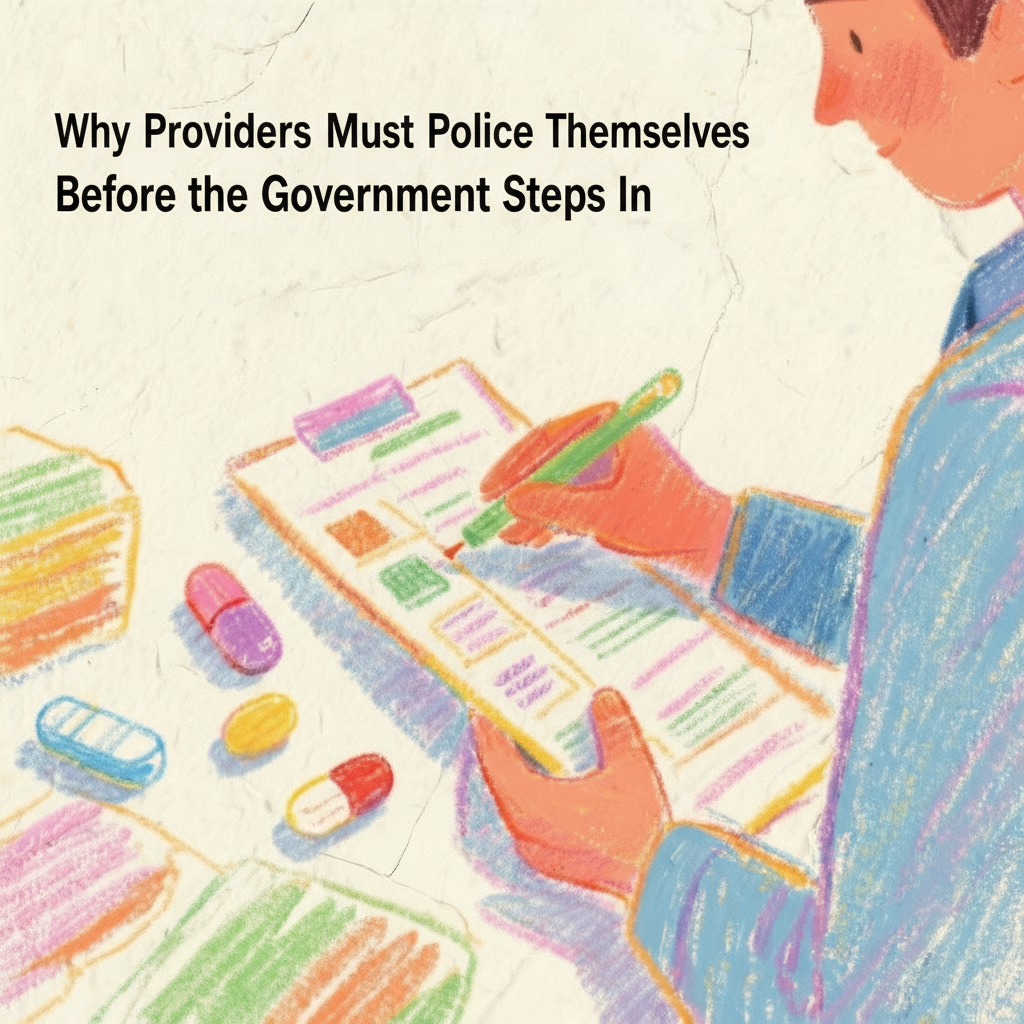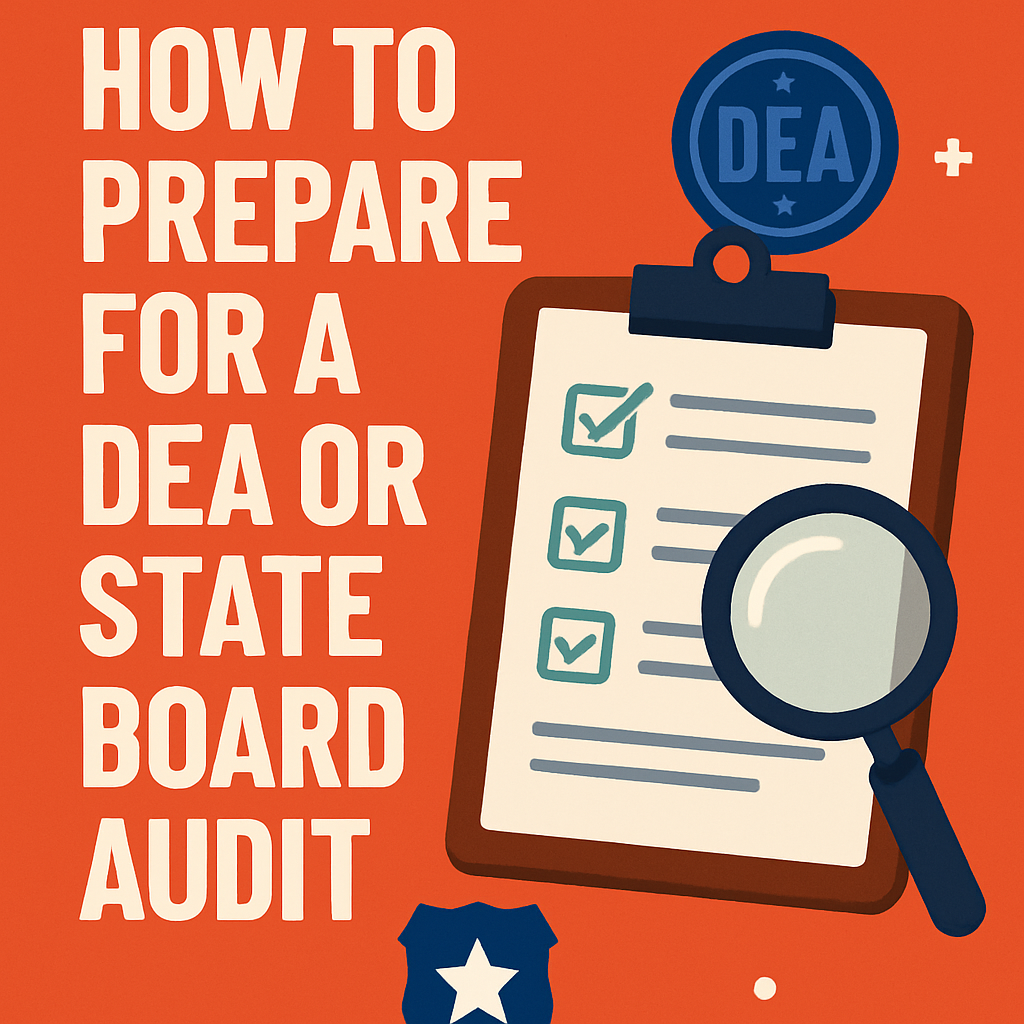
Why Benzodiazepines and Amphetamines Must Be Treated Like Opioids
Doug Jorgensen
March 23, 2025
Introduction: Expanding the Definition of “High Risk”
When most people hear “controlled substances,” they immediately think of opioids.
While opioids deserve their reputation for risk, two other classes—benzodiazepines and amphetamines—carry equal potential for harm, abuse, and diversion.
The same safeguards that apply to opioid prescribing should be applied—without exception—to these medications.
Why Benzodiazepines Deserve High-Risk Status
Benzodiazepines—including alprazolam (Xanax), lorazepam (Ativan), and diazepam (Valium)—are widely prescribed for anxiety, insomnia, and panic disorders.
The risks:
- Dependence and Withdrawal – Physical dependence can occur in weeks; withdrawal can be life-threatening.
- Overdose Risk – Especially when combined with opioids, alcohol, or other sedatives.
- Diversion – High street value and frequent target for misuse.
Why Amphetamines Deserve High-Risk Status
Amphetamines—including mixed amphetamine salts (Adderall) and methylphenidate (Ritalin)—are commonly prescribed for ADHD and narcolepsy.
The risks:
- Misuse and Diversion – High potential for recreational use, particularly among students and professionals.
- Cardiovascular Concerns – Risk of elevated blood pressure, heart attack, and stroke.
- Psychiatric Effects – Can exacerbate anxiety, insomnia, or psychosis in vulnerable patients.
The Overlap With Opioid Risk Profiles
The striking similarities in risk profiles among benzodiazepines, amphetamines, and opioids underscore the necessity of a unified approach to their management. These drug classes share several critical characteristics:
- DEA Schedule II–IV Classification: Depending on the specific medication, all three classes fall under DEA Schedule II, III, or IV. This classification indicates a recognized potential for abuse and dependence, necessitating strict regulatory controls. Schedule II substances, such as many opioids and some amphetamines, carry the highest abuse potential within this classification.
- High Abuse Potential: Each class carries a significant risk of abuse, defined as the intentional non-medical use of a drug for its psychoactive effects. This shared characteristic mandates robust strategies to prevent and detect misuse.
- Risk of Physical Dependence: Development of physical dependence is a common concern across all three groups. This means the body adapts to the presence of the drug, leading to withdrawal symptoms upon cessation.
- Need for Close Monitoring: Given their inherent risks, all three classes require close and continuous monitoring of patients to assess efficacy, detect adverse effects, identify signs of misuse or diversion, and ensure ongoing appropriateness of therapy.
Because of this profound overlap in risk factors, the risk mitigation strategies traditionally applied to opioids must be identically and consistently applied to benzodiazepines and amphetamines. To do otherwise is to ignore established patterns of harm.Risk Mitigation Strategies That Should Apply
Effective risk mitigation is paramount for all high-risk controlled substances. The following strategies, standard for opioid prescribing, should be universally applied:
- Controlled Substance Agreements (CSAs): These formal agreements between patient and prescriber are foundational. A CSA explicitly outlines expectations for safe use, prescribing policies (e.g., single pharmacy use, no early refills), and mandatory monitoring requirements such as drug testing and pill counts. It fosters a shared understanding of responsibilities and safeguards.
- Prescription Monitoring Program (PMP) Checks: PMPs are state-run electronic databases that collect information on all controlled substance prescriptions dispensed within the state. Regular PMP checks allow prescribers to identify patterns of multiple prescribers or overlapping prescriptions, which can indicate doctor shopping, diversion, or potentially dangerous polypharmacy. This is a critical tool for identifying high-risk behaviors.
- Urine Drug Testing (UDT): UDT serves multiple vital purposes. It confirms the presence of the prescribed medication, helping to verify adherence. Equally important, it detects the absence of the prescribed medication (potentially indicating diversion) and the presence of non-prescribed substances, including illicit drugs or other controlled substances, which could pose significant health risks or indicate problematic use.
- Pill Counts: Periodic pill counts, where patients are asked to return their medication for a physical count, are an effective method to detect early signs of diversion or overuse. Discrepancies between the expected and actual pill count can prompt further investigation and intervention.
- Frequent Follow-Up Visits: The frequency of follow-up visits should be dynamically adjusted based on the patient’s individual risk level, treatment response, and the stability of their condition. More frequent visits are warranted for higher-risk patients or during treatment initiation/adjustment to ensure adequate monitoring and patient support.
Common Prescribing Pitfalls
Despite the known risks, several common prescribing pitfalls persist, increasing the likelihood of adverse outcomes:
- Long-Term Use Without Reassessment: Both benzodiazepines and amphetamines are often intended for short- to medium-term therapeutic use. However, prescriptions can frequently stretch for years without adequate reevaluation of the ongoing necessity, efficacy, or potential for harm. This “autopilot” prescribing can lead to prolonged dependence and increased risk.
- Combination With Other High-Risk Medications: The dangers of combining benzodiazepines with opioids are well-documented, significantly increasing the risk of respiratory depression and overdose. Similarly, combining amphetamines with other stimulants (prescribed or illicit) can lead to severe cardiovascular events such as arrhythmias, hypertensive crises, and stroke. Prescribers must be acutely aware of all concurrent medications.
- Failure to Monitor Functionality: Continued prescribing without documented improvement in symptoms or functional status invites scrutiny and raises questions about the appropriateness of ongoing therapy. If a patient is not demonstrating clinical benefit, continued exposure to high-risk medications is unjustified and potentially negligent.
Regulatory and Legal Implications
The regulatory and legal landscape surrounding controlled substances is rapidly evolving, and scrutiny is expanding beyond just opioids:
- DEA and State Board Scrutiny: The Drug Enforcement Administration (DEA) and state medical/nursing/pharmacy boards are increasingly scrutinizing prescribing patterns for all high-risk controlled substances, not merely opioids. Investigations, audits, and disciplinary actions related to benzodiazepine and stimulant prescribing are becoming more common.
- Insurer Requirements: Insurers are implementing tighter prior authorization requirements for long-term benzodiazepine and stimulant therapy, reflecting a growing awareness of the risks and costs associated with unmonitored chronic use. This financial lever encourages more responsible prescribing practices.
- Negligent Prescribing: Failure to apply adequate safeguards—such as PMP checks, UDT, and CSAs—to benzodiazepine and amphetamine prescribing can be viewed as negligent prescribing. This can lead to professional disciplinary action, civil lawsuits, and in severe cases, criminal charges, particularly if patient harm or death occurs.
Patient Communication
Patients may initially resist additional monitoring protocols, viewing them as punitive or believing they are “only for opioid patients.” Effective patient communication is therefore paramount:
- Explain Universal Safety: Providers must clearly and empathetically explain that risk mitigation strategies are applied equally to all high-risk medications for the patient’s safety. This moves the conversation beyond stigmatizing specific drug classes.
- Emphasize Protection of Access: Patients should understand that consistent monitoring protects their access to necessary treatment by demonstrating compliance with best practices and safeguarding against misuse or diversion. This frames monitoring as a supportive measure rather than a punitive one.
- Use Consistent Policies: Applying consistent policies across all high-risk medications helps avoid patient perception of bias or unfair targeting. Uniformity in approach builds trust and reinforces the message
While opioids are recognized for their risks, benzodiazepines and amphetamines carry equally high risks of harm, abuse, and diversion, demanding the same strict safeguards.
Benzodiazepines, used for anxiety and insomnia (e.g., Xanax, Ativan, Valium), pose significant risks:
- Dependence and Withdrawal: Rapid physical dependence can occur, with withdrawal being dangerous (seizures, psychosis).
- Overdose Risk: Substantial, especially when combined with other CNS depressants like opioids or alcohol, leading to respiratory depression and death.
- Diversion: High street value makes them targets for illicit trade via doctor shopping or forged prescriptions.
Amphetamines, prescribed for ADHD and narcolepsy (e.g., Adderall, Ritalin), also carry substantial risks:
- Misuse and Diversion: High potential for recreational misuse among students and professionals, fueling illicit demand.
- Cardiovascular Concerns: Stimulant effects can cause elevated blood pressure, arrhythmias, heart attack, and stroke.
- Psychiatric Effects: Can worsen anxiety, cause insomnia, and trigger psychosis.
These classes share risk profiles with opioids:
- DEA Schedule II–IV Classification: Indicates abuse and dependence potential.
- High Abuse Potential: Significant risk of non-medical use.
- Risk of Physical Dependence: Body adapts, leading to withdrawal upon cessation.
- Need for Close Monitoring: Essential for safety and efficacy.
Therefore, opioid risk mitigation strategies must apply universally:
- Controlled Substance Agreements (CSAs): Formal agreements outlining safe use and monitoring.
- Prescription Monitoring Program (PMP) Checks: Identify multiple prescribers or dangerous polypharmacy.
- Urine Drug Testing (UDT): Confirm adherence, detect diversion or non-prescribed substances.
- Pill Counts: Detect diversion or overuse.
- Frequent Follow-Up Visits: Adjusted based on patient risk.
Common prescribing pitfalls include long-term use without reassessment, combination with other high-risk medications (especially opioids with benzodiazepines, or other stimulants with amphetamines), and failure to monitor functional improvement.
Regulatory and legal scrutiny is expanding beyond opioids:
- DEA and State Board Scrutiny: Increased investigations and disciplinary actions for all high-risk controlled substances.
- Insurer Requirements: Tighter prior authorization for chronic benzodiazepine and stimulant therapy.
- Negligent Prescribing: Failure to apply safeguards can lead to professional, civil, or criminal consequences.
Patient communication is key. Explain that universal safety protocols protect patient access and are not punitive, building trust through consistent policies across all high-risk medications.
Final Thoughts: Risk Is Risk
Whether it’s a painkiller, a sedative, or a stimulant, if a medication has high abuse potential, it deserves the same level of oversight.
By treating benzodiazepines and amphetamines like opioids in terms of compliance and monitoring, we reduce misuse, protect patients, and protect providers.
The drug class may differ, but the responsibility is the same.
About the Author
Douglas J. Jorgensen, DO, CPC, FAAO, FACOFP
Dr. Doug is a physician, consultant, and national educator on healthcare compliance, controlled substance management, and risk mitigation. He helps providers design monitoring protocols that align with regulatory expectations and clinical best practices.


